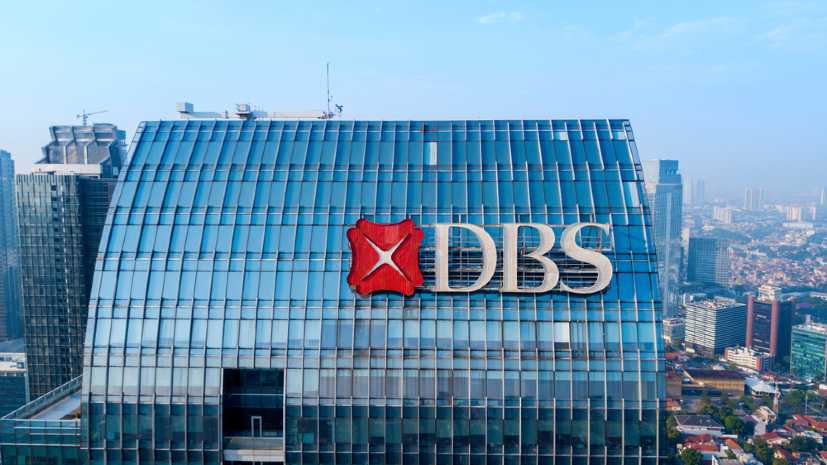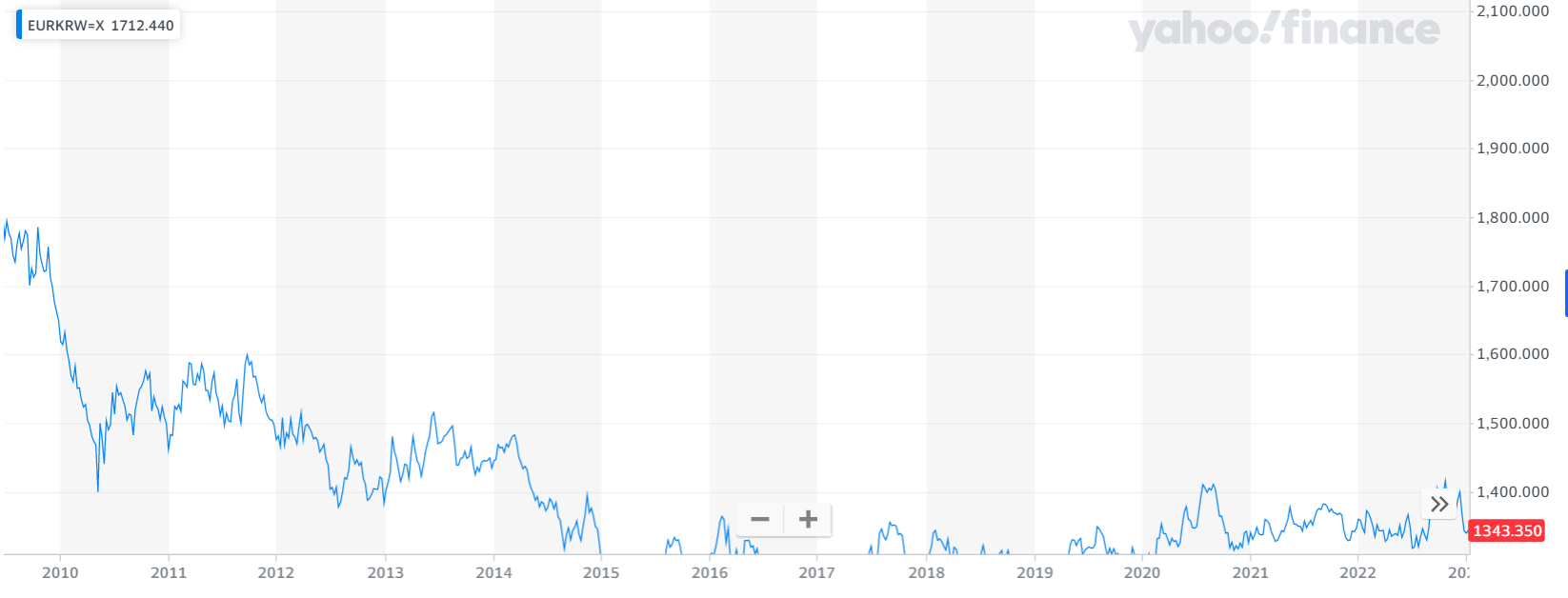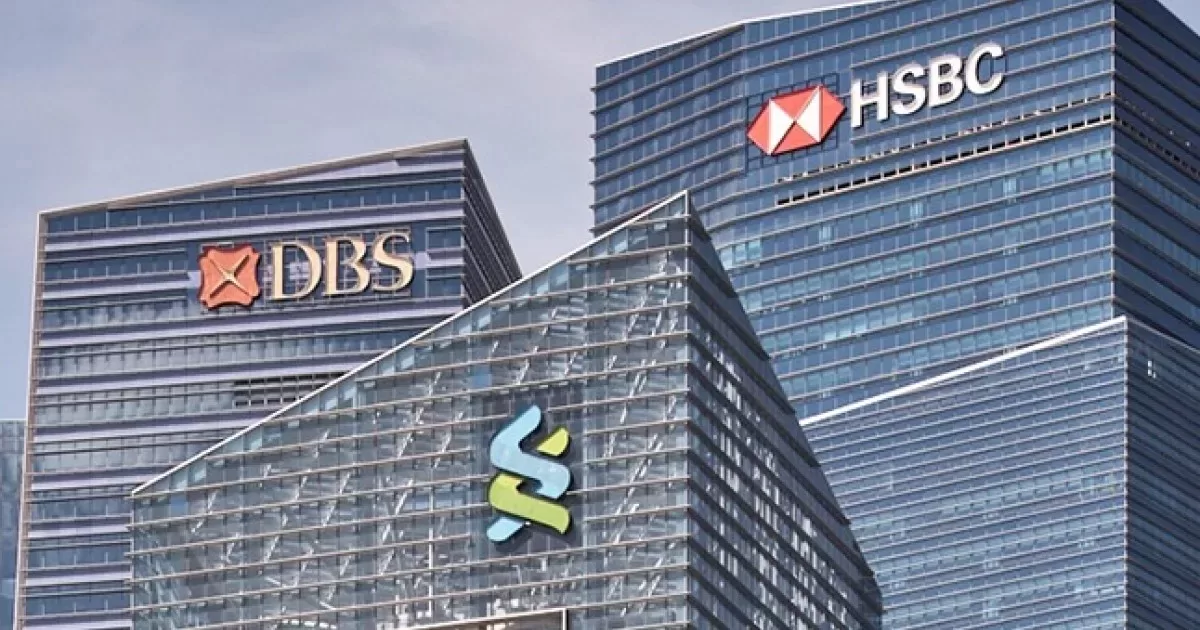Last updated February 17th, 2025.
Asia is home to many of the world’s safest banks. As a group, banks in Asia are significantly better-capitalized than their counterparts in the US.
Yet this wasn’t always true. Not long ago, Switzerland and Liechtenstein were considered the “gold standard” of countries to hold money offshore. Recent events, along with Asia’s rise, have lured capital elsewhere, though.
As such, investors from around the world are looking toward places like Singapore and South Korea to store their assets.
Wealthy investors aren’t just pivoting to Asia because the world’s most secure banks are all on the continent; they’re also to diversify their portfolios and hold different currencies.
The Singapore dollar, Korean won, and even a few exotic currencies, including the Thai baht, have significantly outperformed most major global currencies.
Denominating your assets in terms of an appreciating currency is simply a bonus on top of storing money in a stronger bank.
Keeping that in mind, here are the top ten banks in Asia, ranked in terms of their ability to protect customer deposits and provide reliable services.
We hope our list helps you make an informed decision when it comes to diversifying your wealth internationally.
DBS Bank
DBS Bank widely considered the safest bank in Singapore. For over a decade, they’ve been ranked as the continent’s most secure and reliable financial institution.
As a leading financial services provider, DBS offers its customers a wide range of products and services, including savings accounts, credit cards, loans, investments, and more.
The bank also provides an online banking platform that allows customers to manage their finances securely from anywhere in the world.
With its robust security measures and customer-friendly policies, DBS Bank is a top choice for anyone seeking reliable banking experience in Asia.
Foreign, non-residents of Singapore can open a bank account at DBS with a minimum deposit of S$350,000 in most circumstances.

Singapore, Asia’s de-facto financial center, continues to take market share from its competitors. Family offices, UHNWIs, and multinational firms alike are moving their assets here.
OCBC
A leading institution in Singapore and Southeast Asia, OCBC is the second largest bank in Singapore by total assets and one of the world’s most highly rated banks.
OCBC Bank has provided world-class banking services since 1932, when it was founded as the Overseas Chinese Banking Corporation Limited.
Today, it offers a wide range of products and services, including retail banking, wealth management, and insurance. The bank also operates branches in Malaysia, Indonesia and China.
OCBC provides innovative solutions for its customers through digital technology, such as an AI-driven chatbot.
With its strong presence in Southeast Asia, OCBC is positioned for many years to come and is considered one of the most stable banks in Singapore – and the world!
If you’re a foreigner without a long-term visa, OCBC usually lets people open an account with a minimum S$200,000 deposit.
United Overseas Bank (UOB)
UOB is a premier banking institution in Singapore, serving customers with diverse financial services and products.
Founded in 1935, UOB has become a major player in the banking industry, with over 500 branches across 18 countries and territories. UOB provides customers with a variety of banking solutions.
It also offers online banking services for customers who prefer to manage their finances online. UOB strives to provide its customers with the best service possible by leveraging technology and innovation to simplify banking processes.
You can generally open a UOB Wealth account as a non-resident, assuming you make a minimum deposit of S$100,000.
Now that the “Lion City’s” major banks have officially cleared the top 3 spots on our list of the most stable banks in the world, here’s an article about how you can open an account in Singapore as a foreigner.
Korea Development Bank
Established in 1954, the Korea Development Bank (KDB) is a government-owned financial institution that offers various services to governmental organizations and corporations in South Korea.
It was established in 1954 as the first development bank in South Korea, and since then, it has provided loans and other financial services to support the country’s economic growth.
With its strong presence in both domestic and international markets, KDB is considered one of the safest Korean banks.
Export-Import Bank of Korea
The Export-Import Bank (KEXIM) is a well-capitalized, secure, government-funded institution that offers export credit guarantees, loans, and other services to Korean companies.
It was first established in 1976 to help Korean exporters and importers finance their trade. KEXIM offers a wide range of services, such as credit guarantees, foreign currency loans for overseas investment, and more.
KEXIM also provides financial advice to companies looking to expand their business abroad. Its mission is to promote the development of international trade and foreign investments in Korea through its various services.

The specific bank isn’t all that matters – its host country does too, especially with regards to their specific currencies. Here’s a 15-year chart of the Euro compared to the Korean Won, the second which appreciated heavily in that time.
Industrial Bank of Korea (IBK)
The Industrial Bank of Korea (IBK) is a leading financial institution in South Korea. It was established in 1954 and has since grown to become one of the largest commercial banks in the country.
IBK provides various services, such as retail banking, corporate banking, investment banking, asset management, and insurance.
In addition to its domestic operations, IBK also has overseas branches in China, Vietnam, Japan, the United States, and other countries.
IBK is also actively involved in philanthropic activities has committed to South Korea’s economic development for decades.
Bank of Taiwan
The Bank of Taiwan (BOT) is Taiwan’s central bank. Established back in 1899, they’re responsible for issuing currency, managing foreign exchange reserves, and supervising financial institutions – just like any central bank.
Perhaps even more notable? It’s one of the very few central banks in the world that provides general financial services to the public. You’ll find over 150 branches of BOT all across the island.
BOT naturally works with other government agencies to promote economic growth and stability. However, even though it made the 7th spot on our list on the world’s most secure banks, we don’t suggest making an investment in Taiwan.
China Development Bank
The China Development Bank (CDB) is a state-owned policy bank of the People’s Republic of China. It was established in 1994 to offer financial services to support the development of the Chinese economy.
The CDB provides loans, equity investments, guarantees, and other financial services for infrastructure and industrial projects.
They have branches in major cities across China and the rest of Asia, as well as offices in Europe, North America, and Africa.
Hang Seng Bank
Hang Seng Bank is one of the largest banks in Asia and generally considered the most stable bank in Hong Kong.
Founded back in 1933, Hang Seng Bank has provided services in Greater China for over 85 years.
They offer deposit accounts, loans, and all the other typical services expected of a large bank. Hang Seng also provides online and mobile banking services that allow customers to manage their finances efficiently.
With its impressive presence in Hong Kong and mainland China, Hang Seng Bank is well-positioned to take advantage of the growing opportunities in these emerging markets.
Agricultural Development Bank of China
The Agricultural Development Bank of China (ADBC) is a state-owned financial institution that provides financial services to rural areas and agricultural enterprises. Generally, it’s considered one of the safest banks in China.
Established in 1994, it is the most significant policy bank in China and plays a vital role in providing funds for agricultural development projects.
ADBC is also responsible for implementing national agricultural policies, such as providing loans to farmers, developing rural infrastructure, and improving agritech.
With branches nationwide, ADBC also has a network of foreign partners that it works with to promote international cooperation in the field of agriculture.
FAQs: Safest Banks in Asia
What is the Most Stable Bank in Asia?
For over a decade, DBS has consistently ranked as the most secure and reliable financial institution in the region. It has been recognized by Global Finance’s annual review as the #1 safest bank in Asia every single year for well over ten years.
DBS is not only the largest bank in Southeast Asia but also one of the top 10 in the world by market capitalization. Its strong capital reserves, prudent risk management, and robust regulatory environment in Singapore contribute to DBS' reputation as a highly solvent and stable bank.
What's the Safest Currency in Asia?
The safest currency in Asia is widely considered to be the Singapore Dollar (SGD). Singapore has established itself as Asia’s de facto financial center, attracting multinational firms, ultra-high-net-worth individuals (UHNWIs), and family offices looking for a stable and secure place to store their wealth.
While other currencies in Asia, such as the Korean Won (KRW) or Japanese Yen (JPY), are also relatively stable, they face challenges such as demographic decline (in Japan and South Korea) and external geopolitical risks. The Singapore Dollar, on the other hand, remains a safe-haven currency due to Singapore’s political neutrality.
Which Country in Asia Has the Most Stable Banking System?
When it comes to banking stability in Asia, Singapore stands out as the country with the most stable banking system. The city-state has built a reputation as a global financial hub, attracting investors, multinational corporations, and ultra-high-net-worth individuals seeking a secure place to store their wealth.
What's the Largest Bank in Asia?
The largest bank in Asia by total assets is the Industrial and Commercial Bank of China (ICBC). ICBC is not only the biggest bank in Asia but also the largest bank in the world, with total assets exceeding $5.5 trillion USD. It is one of China’s "Big Four" state-owned banks and plays a crucial role in the country’s financial system.
While ICBC dominates in terms of size, it is important to note that size does not always equate to safety.







